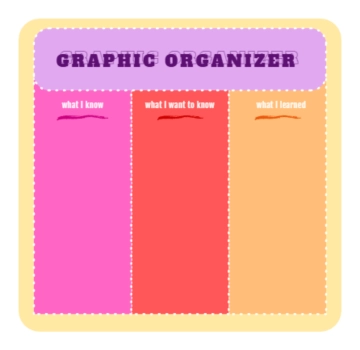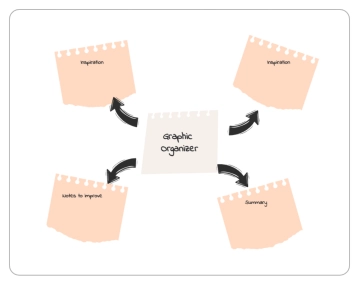Free Marketing Strategy Improvement Plan

1. Executive Summary
This Marketing Strategy Improvement Plan for [Your Company Name] aims to elevate our current marketing efforts by identifying gaps, implementing advanced techniques, and optimizing existing strategies. The ultimate goal is to improve marketing efficiency, drive higher engagement, and achieve sustainable business growth. By enhancing both digital and traditional marketing approaches, we aim to create a more effective and integrated strategy that aligns with our business objectives and resonates with our target audience.
2. Market Analysis
2.1 Industry Overview
To build a foundation for this plan, a thorough analysis of current industry trends is conducted. This includes a SWOT analysis, which highlights both internal and external factors impacting our business sector.
Strengths: Recognized brand identity, experienced team.
Weaknesses: Gaps in data integration, and slow adoption of new digital tools.
Opportunities: Rising demand for digital services, new emerging markets.
Threats: Increased competition, changing regulatory environment.
These insights will inform strategic decisions, guiding us toward an adaptable and competitive marketing approach.
2.2 Customer Insights
Understanding consumer behavior is at the core of any successful marketing strategy. Through market segmentation and the development of detailed buyer personas, we will gain a deeper understanding of our target audience. By tailoring our approach to meet their unique needs and preferences, we can ensure more impactful marketing initiatives. Key insights from this section will help in personalizing our content, messaging, and offers to foster deeper connections with our customers.
3. Strategy Development
3.1 Objective Setting
Clear and measurable marketing objectives are essential for tracking progress. We will define SMART (Specific, Measurable, Achievable, Relevant, and Time-bound) objectives that are directly aligned with our broader business goals. These objectives will serve as a roadmap to guide marketing efforts, ensuring they are targeted, efficient, and results-driven. Examples include:
Increase website traffic by 30% within the next six months.
Improve lead conversion rates by 20% within one year.
3.2 Competitive Analysis
A thorough analysis of our competitors will provide insights into their marketing strengths and weaknesses. We will evaluate their positioning, digital presence, content strategies, and customer engagement tactics. By understanding their strategies and identifying potential gaps, we can differentiate our brand and position ourselves as a leader in the market. Competitive benchmarking will set realistic performance standards, ensuring we stay ahead of industry trends.
3.3 Brand Positioning
Refining our brand positioning is vital for conveying a compelling value proposition to our target audience. This involves developing a unique selling proposition (USP) that differentiates us from competitors. By focusing on what makes our brand distinctive—whether it's superior customer service, product quality, or innovation—we will strengthen our market position and improve brand recognition.
4. Marketing Tactics
4.1 Digital Marketing
To thrive in today’s digital age, our strategy must prioritize an enhanced online presence. Key tactics include:
SEO Optimization: Strengthen website visibility by optimizing content and improving technical SEO.
Content Marketing: Develop a robust content strategy with blogs, case studies, videos, and infographics to engage our audience and drive organic traffic.
Social Media Marketing: Create an interactive social media plan focusing on brand storytelling, community building, and influencer collaborations to increase visibility and engagement.
Email Marketing: Implement targeted email campaigns that nurture leads and build relationships with customers through personalized messaging.
4.2 Traditional Marketing
While digital marketing takes the lead, traditional marketing tactics will continue to play an important role. By leveraging offline channels, we can reach wider and often untapped audiences:
Print Advertising: Strategically placed ads in industry magazines and newspapers to reinforce brand credibility.
Direct Mail Campaigns: Personalized mailers to promote new products or offers to high-value customers.
Event Sponsorships and Trade Shows: Position our brand as a thought leader by participating in key industry events, fostering relationships, and building brand awareness.
5. Implementation Plan
5.1 Action Plan
To ensure the successful execution of this marketing strategy, we will create a detailed action plan with clear milestones. Key components include:
Timeline: A comprehensive timeline outlining the phases for each marketing activity, including deadlines for content creation, campaign launches, and event planning.
Responsible Teams and Personnel: Assign key team members and departments to oversee each initiative, ensuring accountability.
Resource Allocation and Budgeting: Set a realistic budget to allocate resources effectively across both digital and traditional marketing efforts, ensuring optimal return on investment (ROI).
5.2 Monitoring and Evaluation
Regular monitoring and evaluation are essential to determine the effectiveness of our marketing initiatives. By establishing key performance indicators (KPIs)—such as conversion rates, customer engagement levels, and ROI—we will track progress and identify areas needing improvement. Quarterly reviews will ensure the strategy remains aligned with our goals and provide opportunities for adjustments based on real-time data.
Example KPIs:
Increase conversion rates by 20% within the first quarter.
Achieve a 25% increase in social media engagement within 6 months.
Reduce customer acquisition costs by 15% over the next year.
6. Conclusion
This Marketing Strategy Improvement Plan lays the foundation for enhancing our marketing efforts, with a clear focus on increasing efficiency and driving sustainable business growth. By refining our digital presence, improving customer engagement, and leveraging both traditional and modern marketing tactics, we will achieve a stronger market position. Through continuous monitoring, feedback, and optimization, we will ensure that the plan delivers measurable results and remains adaptable to future challenges.
- 100% Customizable, free editor
- Access 1 Million+ Templates, photo’s & graphics
- Download or share as a template
- Click and replace photos, graphics, text, backgrounds
- Resize, crop, AI write & more
- Access advanced editor
The Marketing Strategy Improvement Plan Template from Template.net is fully editable and customizable to optimize your marketing efforts. Tailor the plan to focus on specific strategies, goals, and performance metrics. Editable in our AI Editor Tool, this template provides a flexible, personalized approach to enhancing your marketing strategy and driving business success.
You may also like
- Finance Plan
- Construction Plan
- Sales Plan
- Development Plan
- Career Plan
- Budget Plan
- HR Plan
- Education Plan
- Transition Plan
- Work Plan
- Training Plan
- Communication Plan
- Operation Plan
- Health And Safety Plan
- Strategy Plan
- Professional Development Plan
- Advertising Plan
- Risk Management Plan
- Restaurant Plan
- School Plan
- Nursing Home Patient Care Plan
- Nursing Care Plan
- Plan Event
- Startup Plan
- Social Media Plan
- Staffing Plan
- Annual Plan
- Content Plan
- Payment Plan
- Implementation Plan
- Hotel Plan
- Workout Plan
- Accounting Plan
- Campaign Plan
- Essay Plan
- 30 60 90 Day Plan
- Research Plan
- Recruitment Plan
- 90 Day Plan
- Quarterly Plan
- Emergency Plan
- 5 Year Plan
- Gym Plan
- Personal Plan
- IT and Software Plan
- Treatment Plan
- Real Estate Plan
- Law Firm Plan
- Healthcare Plan
- Improvement Plan
- Media Plan
- 5 Year Business Plan
- Learning Plan
- Marketing Campaign Plan
- Travel Agency Plan
- Cleaning Services Plan
- Interior Design Plan
- Performance Plan
- PR Plan
- Birth Plan
- Life Plan
- SEO Plan
- Disaster Recovery Plan
- Continuity Plan
- Launch Plan
- Legal Plan
- Behavior Plan
- Performance Improvement Plan
- Salon Plan
- Security Plan
- Security Management Plan
- Employee Development Plan
- Quality Plan
- Service Improvement Plan
- Growth Plan
- Incident Response Plan
- Basketball Plan
- Emergency Action Plan
- Product Launch Plan
- Spa Plan
- Employee Training Plan
- Data Analysis Plan
- Employee Action Plan
- Territory Plan
- Audit Plan
- Classroom Plan
- Activity Plan
- Parenting Plan
- Care Plan
- Project Execution Plan
- Exercise Plan
- Internship Plan
- Software Development Plan
- Continuous Improvement Plan
- Leave Plan
- 90 Day Sales Plan
- Advertising Agency Plan
- Employee Transition Plan
- Smart Action Plan
- Workplace Safety Plan
- Behavior Change Plan
- Contingency Plan
- Continuity of Operations Plan
- Health Plan
- Quality Control Plan
- Self Plan
- Sports Development Plan
- Change Management Plan
- Ecommerce Plan
- Personal Financial Plan
- Process Improvement Plan
- 30-60-90 Day Sales Plan
- Crisis Management Plan
- Engagement Plan
- Execution Plan
- Pandemic Plan
- Quality Assurance Plan
- Service Continuity Plan
- Agile Project Plan
- Fundraising Plan
- Job Transition Plan
- Asset Maintenance Plan
- Maintenance Plan
- Software Test Plan
- Staff Training and Development Plan
- 3 Year Plan
- Brand Activation Plan
- Release Plan
- Resource Plan
- Risk Mitigation Plan
- Teacher Plan
- 30 60 90 Day Plan for New Manager
- Food Safety Plan
- Food Truck Plan
- Hiring Plan
- Quality Management Plan
- Wellness Plan
- Behavior Intervention Plan
- Bonus Plan
- Investment Plan
- Maternity Leave Plan
- Pandemic Response Plan
- Succession Planning
- Coaching Plan
- Configuration Management Plan
- Remote Work Plan
- Self Care Plan
- Teaching Plan
- 100-Day Plan
- HACCP Plan
- Student Plan
- Sustainability Plan
- 30 60 90 Day Plan for Interview
- Access Plan
- Site Specific Safety Plan





























